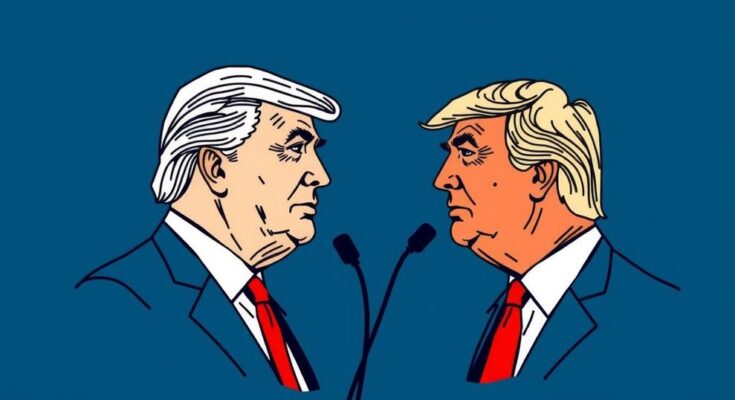The 2024 presidential campaign prominently features economic policy as a decisive issue for voters. Former President Trump advocates for swift price reductions, permanent tax cuts, and tariffs on foreign goods, while Vice President Harris proposes inclusive growth, tax cuts for workers, and support for small businesses. Economic confidence among voters leans slightly towards Trump, but economists express concerns about both candidates’ proposals, highlighting the complex landscape of economic policymaking.
As the 2024 presidential campaign heats up, economic policy has become a pivotal focus, resonating deeply with voters concerned about their financial futures. Recent findings from the Pew Research Center indicate that approximately 80% of voters view the economy as a primary concern in their choice for president. Both Donald Trump and Kamala Harris have articulated their differing visions for economic recovery and growth as they rally support across the nation. Former President Trump’s vision for America’s economy is characterized by urgency and assertiveness. At a recent rally in Asheville, N.C., he confidently declared, “The day I take the oath of office, we will rapidly drive prices down and make America affordable again.” His proposed economic agenda includes tackling inflation swiftly, making his tax cuts permanent, boosting domestic energy production, curbing government spending, and imposing tariffs to protect American jobs from foreign competition while also stopping illegal immigration. In stark contrast, Vice President Harris emphasizes a holistic approach aimed at inclusivity and opportunity. She envisions “an opportunity economy” where every person, regardless of their geographical location, has the chance to thrive. Her strategies involve cutting taxes for everyday workers, reducing costs for essential goods such as food and healthcare, and banning price gouging, while also supporting innovation and entrepreneurship to empower small businesses. Public sentiment seems to favor Trump, with a Pew survey revealing that 55% of voters express greater confidence in his economic acumen compared to Harris’s 45%. However, this confidence has not gone unchallenged, as leading economists raise red flags about Trump’s proposals. For instance, University of Chicago economist Steven Durlauf highlighted that Trump’s approach includes potentially harmful tariffs and interference with the Federal Reserve’s autonomy, which could destabilize the economy.
As the 2024 election approaches, economic issues have taken center stage in public discourse, as voters grapple with inflation, job security, and overall prosperity. Candidates Donald Trump and Kamala Harris offer starkly different visions of economic policy, appealing to different voter priorities. Trump’s plans echo a return to familiar conservative principles focused on lowering taxes and reducing regulations, while Harris seeks to innovate ways to promote growth through inclusivity and support for small businesses. Analysts and economists are weighing in on the viability and potential risks of each approach, further complicating the decision for voters.
In summary, the economic policies proposed by Trump and Harris reflect two divergent paths for America, appealing to voters’ desires for security or opportunity. Trump’s rapid intervention strategies aim for immediate relief, relying on deregulation and tariffs, while Harris’s vision focuses on inclusivity and investment in community success. As the election draws nearer, voters will weigh these differing approaches while considering both the potential benefits and risks they may entail. The views of economists on these proposals will play a crucial role in shaping public sentiment and trust in each candidate.
Original Source: www.knopnews2.com



